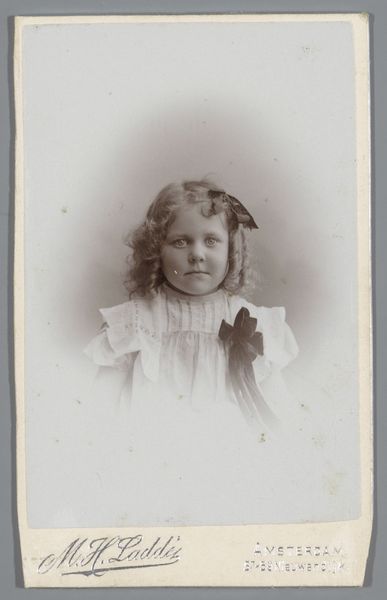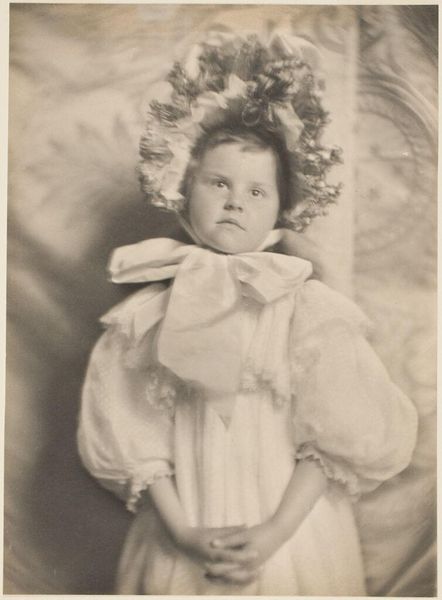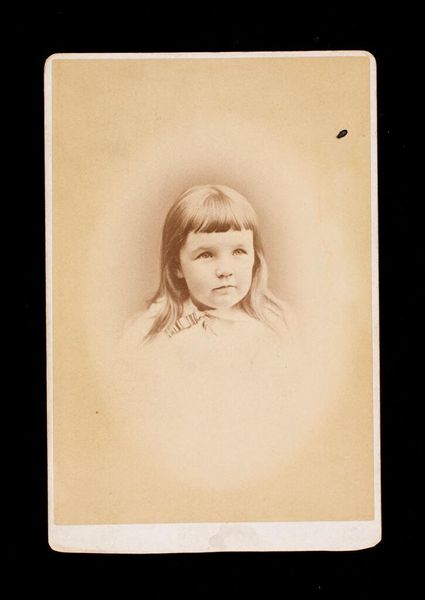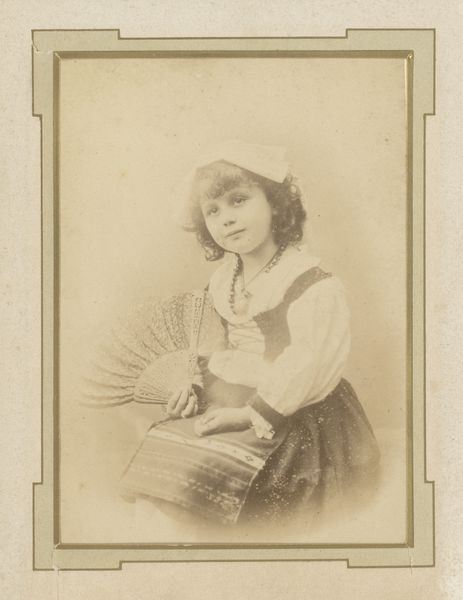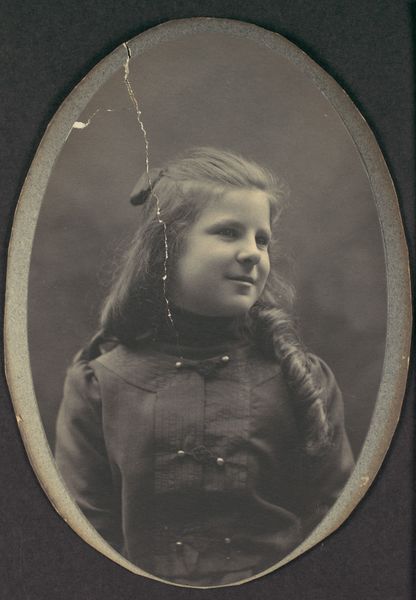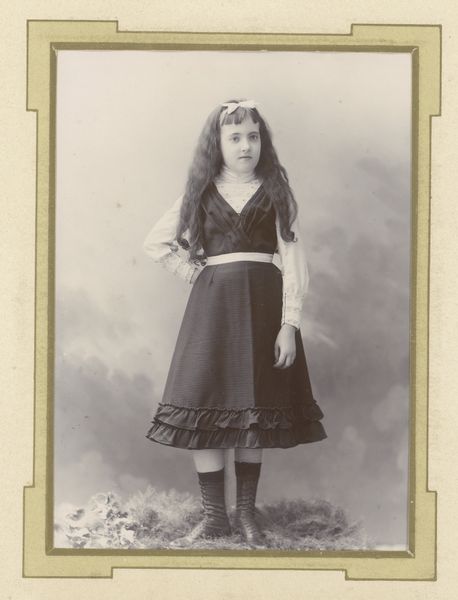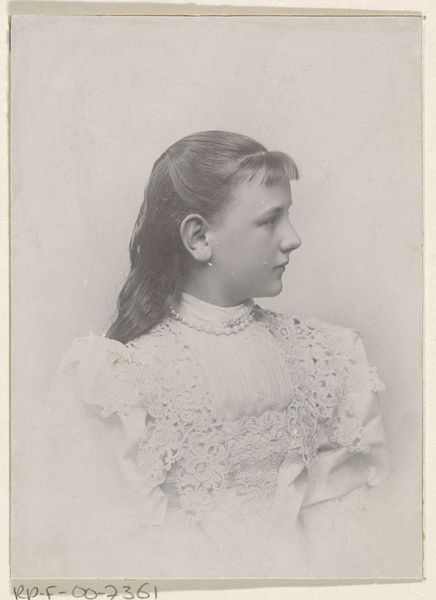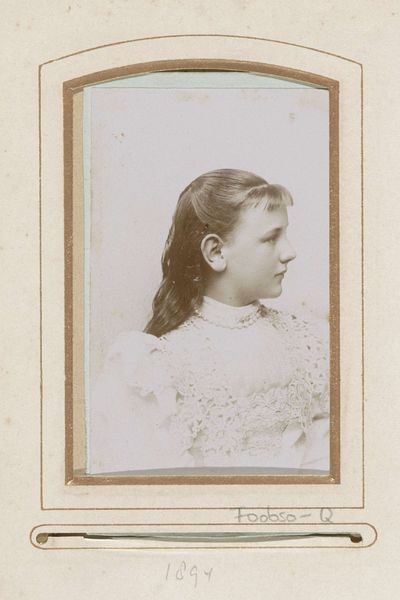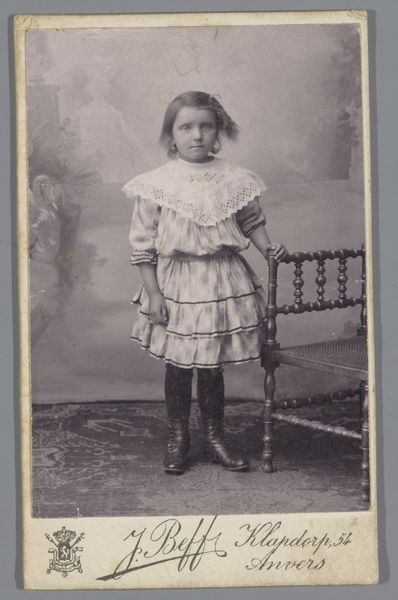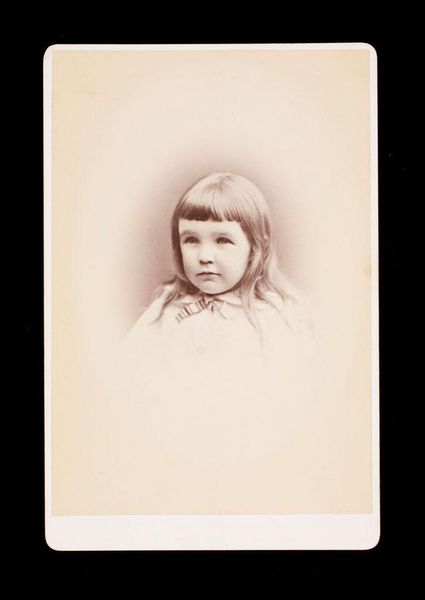
photography, gelatin-silver-print
#
portrait
#
photography
#
gelatin-silver-print
Dimensions: height 160 mm, width 105 mm
Copyright: Rijks Museum: Open Domain
Curator: Before us, we have "Portrait of Tiny Kleiterp as a Toddler, with a Necklace," a gelatin silver print from 1924 by Klaas Kleiterp. The photograph captures a young girl, likely around three or four years old, gazing slightly off-camera. Editor: There's something incredibly poignant about this. Her gaze holds a certain weight, an almost melancholic wisdom beyond her years, amplified by the sepia tones and soft focus. Curator: Yes, the softness adds to the intimacy. The necklace itself carries significance. Throughout history, necklaces have been powerful symbols of status, belonging, and even protection. In the 1920s, such adornments in children’s portraits would speak volumes about family aspirations and societal expectations. Editor: Absolutely. It's difficult to separate this from the construct of childhood itself. Tiny’s presentation – the carefully arranged curls, the pearl necklace – speaks to a performative aspect of innocence. How much agency did she truly have in crafting this image? The pearls especially feel heavy on her small frame, embodying the societal expectations already placed upon her. Curator: Indeed. Even in a seemingly straightforward portrait, there are layers of coded information being conveyed. We see the visual markers of middle-class identity being constructed through Tiny's portrayal. The necklace becomes more than jewelry; it’s a stand-in for privilege and aspiration. Consider how different this image might be without it. Editor: And it prompts questions about access, power, and representation. Whose stories are preserved through these formal portraits, and whose are systematically erased? Photographs like this remind us to consider not just what is seen, but what remains unseen or unspoken within these historical images. It makes me question my role in this, given our setting within these walls. Curator: By looking at these images through a critical lens, acknowledging both their beauty and their potential biases, we create room for richer and much needed narratives about the past, and therefore the present. Editor: Exactly. It's a vital starting point for further investigation and honest discussions. A small snapshot, heavy with unfulfilled possibilities.
Comments
No comments
Be the first to comment and join the conversation on the ultimate creative platform.

